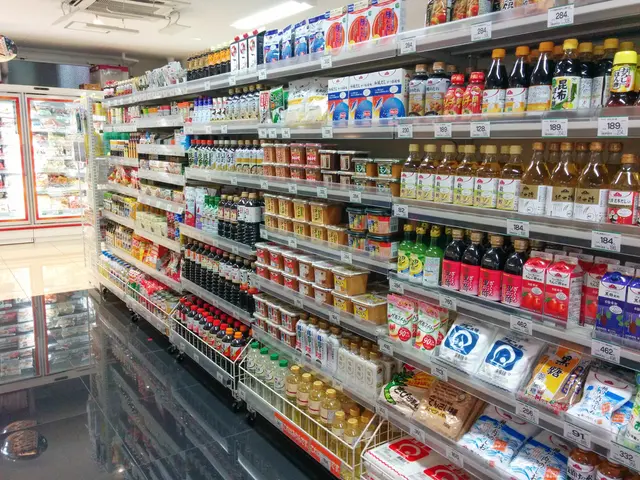Deepening Deterioration of American Consumer Confidence Levels
Record-Breaking Plunge in U.S. Consumer Confidence Mirrors 1980s Fears
Following a drastic drop, the Consumer Sentiment Index reached 50.8 in April 2025, marking one of its lowest levels in history, according to the University of Michigan's latest survey. The index had previously stood at 57.0 in March.
With such a steep decline, there's been no shortage of hypotheses: What, exactly, sparked this sudden and dramatic loss of confidence?
To truly grasp the unfolding situation, it's crucial to delve into both the numerical data and the invisible currents shaping American perceptions of their present and future.
1. A Steep Resurgence in Inflationary Expectations
Though inflation subsided at the tail end of 2024, it reared its head again with a vengeance during the first quarter of 2025. Across key sectors, prices have been on an upward trajectory-from groceries and gas to rent, healthcare, and more. What's troubling isn't just the rate of inflation itself, but the growing anxiety surrounding it.
Short-term inflation expectations now stand at 6.7%, a level not seen since 1981, as reported by the Michigan survey. Long-term expectations have also troughed, hinting at a deepening worry that inflation will remain high and consumers could soon start cutting back on spending, intensifying their fears of a slowdown.
As Dr. Linda Fortes, a behavioral economist at Emory University, explains, "Consumers aren't just reacting to what they see at the checkout counter. They're responding to a persistent fear that the system isn't working in their favor."
2. Economic and Political Uncertainty Amplifying Anxiety
April's dramatic drop in consumer sentiment aligns with an escalation of geopolitical tensions, notably a worsening trade conflict between the U.S. and China. In response, Beijing introduced tariffs of up to 125% on American exports, stoking concerns about a global economic downturn.
Domestically, political unrest in Washington has only bolstered uncertainty. Protracted delays on key fiscal policies and a lack of forward-thinking measures to address soaring deficits have left Americans feeling uncertain about potential tax hikes, layoffs, or a repeat of the debt ceiling standoff.
These worries are no longer abstract; they've become daily concerns for many households. Will mortgage rates surge again? Is my job safe if the economy falters?
3. A Fragile Job Market
Despite a stable unemployment rate of 4.2%, the optimism that once characterized the job market is fading. According to the same University of Michigan survey, job security concerns are currently at their highest level since the Great Recession.
The disconnect between the unemployment rate and dwindling confidence may seem illogical, but it reveals the strain consumers are feeling due to the quality of jobs and the mounting cost of living. As wage growth lags behind inflation and fears of automation and AI creep in, many Americans find themselves working harder for less.
4. Squeezed Personal Finances
With credit card debt reaching record highs and delinquency rates on the rise, borrowers struggle to keep up. The mortgage market remains stubbornly unyielding, with rates consistently elevated, making it a challenge for first-time homebuyers. For younger demographics, particularly Millennials and Gen Z, these hurdles are seen as the latest chapter in years of financial instability-a legacy of the 2008 crisis and exacerbated by the pandemic.
"I have a steady income and a good job," says Brian K., a 32-year-old software engineer from Denver. "But I'm living paycheck to paycheck because rent is skyrocketing, my student loans have resurfaced, and I spend 30% more at the grocery store than I used to."
5. The Emotional Component: From Hope to Exhaustion
Overlooked in consumer sentiment discussions is the emotional toll. Over the past decade, Americans have borne the brunt of one crisis after another-pandemics, inflation, wars, climate shocks, and now the prospect of another recession.
An increasing average of economic weariness is taking hold-a belief that, no matter how hard people work, the system is stacked against them or, at best, indifferent. This psychological shift goes unnoticed by traditional economic indicators but has a powerful impact on how consumers perceive their futures.
As economic conditions continue to present challenges, businesses and policymakers alike must adapt to the unfolding emotional landscape by offering security, transparency, and added value-or risk slipping into oblivion.
Additional Readings
- Understanding the Causes of a Falling Stock Market
- Pi Network's Hidden Potential: Is the Token Burn Strategy the Recipe for a Price Surge?
1. A Growing Concern for Africa's Economic Stability and Business Opportunities
The unsteady global economy has sparked concerns about Africa's potential for growth in business and trade. Given the interconnectedness of global markets, a slowdown in the US could ripple through to African economies, impacting everything from exports to import duties at ports.
On the positive side, this situation may create opportunities for forward-thinking businesses that are capable of navigating economic challenges and capitalizing on market uncertainties.
2. Logistics and Supply Chain Challenges Amplified
Escalating trade tensions between major economic powers put additional pressure on global logistics and supply chains, posing challenges for businesses operating across continents. Companies reliant on products imported from or exported to the US are now grappling with supply shortages and higher transportation costs.
The ripple effects of these issues could have a significant impact on the overall health of global businesses and economies in the short term.
3. Personal Finance and Investment Opportunities in a Volatile Market
With fears of recession looming, personal finance enthusiasts and investors are scrambling to understand how the uncertain economic climate might reshape asset allocation strategies. Some are opting to diversify their investment portfolios by moving away from traditional stocks and bonds, favoring alternative financial instruments like cryptocurrencies, real estate, or gold.
Others seek solace in entrepreneurial endeavors, hoping to create their own opportunities in an increasingly competitive market.
4. The Role of Finance and Policy in Mitigating Economic Downturns
Angst regarding the future of the US economy has propelled a Fix-the-Economy movement, with activists calling for reforms in the financial and political spheres. Proposed measures include fiscal policies designed to stimulate economic growth, investment in jobs and education, and increased oversight of financial institutions to prevent another crisis.
The success or failure of these initiatives will have a profound impact on the economy and, ultimately, the futures of businesses and households globally.
5. Africa as a Potential Beacon of Global Economic Recovery
Some experts point to Africa as a potential engine of global economic recovery in the coming years. With a young, rapidly expanding population and immense resource wealth, African countries like Ethiopia, Nigeria, and Rwanda are attracting interest from global businesses seeking to capitalize on the continent's potential for growth.
As the US and other leading economies grapple with their own economic uncertainties, Africa offers a glimmer of hope to investors and policymakers eager to reshape the global economic landscape.
Additional Readings
- Africa's Rising: The Continent's Economy on the Upswing
- Debunking Common Misconceptions about Starting a Business in Africa








